#Byron Patrick
Explore tagged Tumblr posts
Text
Y'know if we can revive the Lab Rats fandom, then we can revive this fandom too

#i am frankie#Frankie Gaines#Dayton Reyes#Cole Reyes#Tammy Gilroy#Byron Patrick#Andrew LaPierre#Eliza Gaines#Simone LaPierre#This show didn’t deserve to get cancelled#nickelodeon#nostalgia#2010s nostalgia#2010s
34 notes
·
View notes
Text









WILD CARDS // 2.07 “The Big Bang Theory”


#wildcardsedit#wild cards cw#tvedit#ellimax#ellimaxedit#ellis x max#ellis x simmons#max x patrick#vanessa morgan#max mitchell#giacomo gianniotti#cole ellis#patrick li#terry chen#simmons#michael xavier#mygraphics#gif#byron mann#jin#jin x max
48 notes
·
View notes
Text

St. Patrick's Cathedral, looking oddly forlorn, in 1923. Saks Fifth Avenue wasn't built (on the right) until the following year.
Photo: Byron Company via MCNY
#vintage New York#1920s#Catholic cathedral#Byron Co.#St. Patrick's Cathedral#cathedral#church#vintage Fifth Ave.#vintage NYC#5th Ave.
134 notes
·
View notes
Text
Jack and the Pack members in their animal forms
No concept art for now, just brainstorming what the pack would be as animals in my Thomas & Friends AU.
Jack - floppy-eared goat with front loader wheels on his legs
Nelson - Tuxedo Cat with ballast tractor wheels on his legs
Byron - Texas longhorn with bulldozer wheels (obviously)
Isobella - dairy sheep with steam lorry wheels on her legs
Kelly - Friesian Horse with crane wheels on his legs
Alfie - British Shorthair cat with excavator wheels on his legs
Ned - Gyspy Horse with steam shovel wheels on his legs
Patrick - St. Bernard with cement mixer wheels
Max and Monty - bulls with dump truck wheels on legs
Oliver - large billy goat with excavator wheels



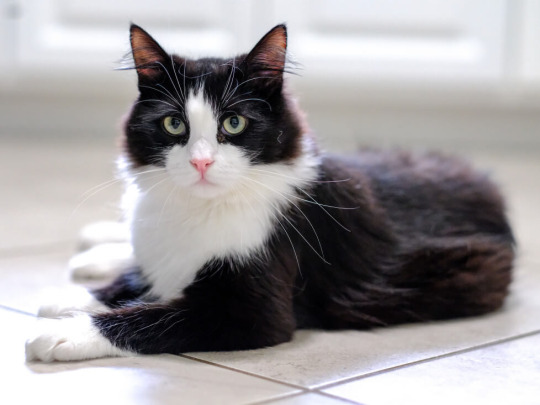

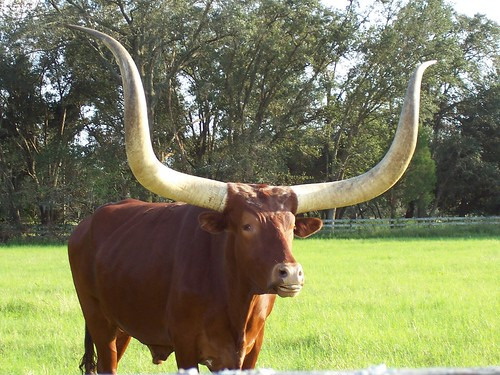
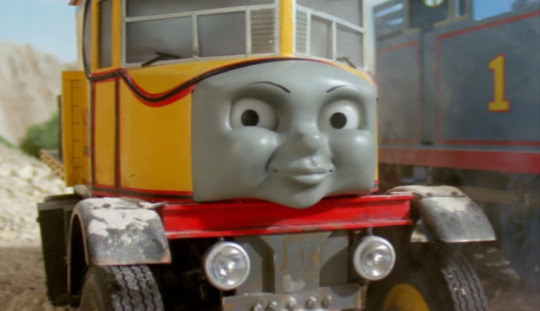
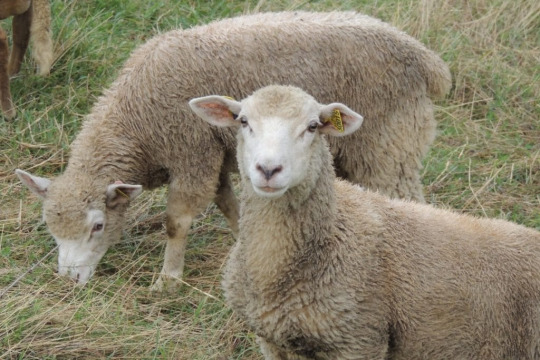





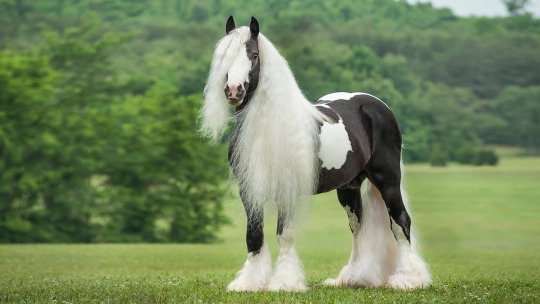





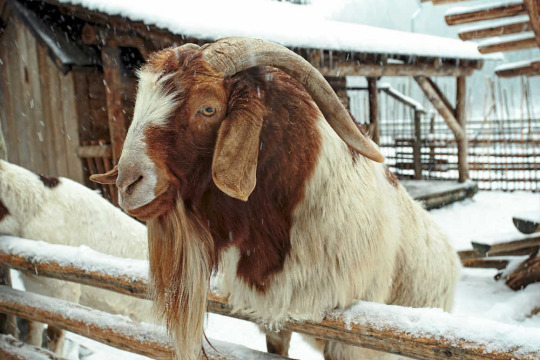
Now, since they are construction vehicles, I'm thinking whether it's necessary to keep the mechanical parts on them as animals. Jack's horns could be implemented as his plow, f.e, so no parts necessary for him . . . . . . I'll think about it.
#jack and the pack#thomas and friends#ttte#spin off series#ttte jack#ttte byron#ttte patrick#ttte ned#ttte max and monty#ttte alfie#ttte isobella#ttte nelson#ttte oliver#ttte kelly#ttte au#animal forms#brainstorming
11 notes
·
View notes
Text

#the commuter#movies#jaume collet serra#byron willinger#philip de blasi#ryan engle#liam neeson#vera farmiga#patrick wilson#illustration#vintage art#alternative movie posters
4 notes
·
View notes
Text
youtube
Faltou verba: "A ilha misteriosa" (Mysterious Island, 2005)
#Mysterious Island#kyle maclachlan#jules verne#Russell Mulcahy#Hallmark Channel#patrick stewart#Danielle Calvert#Gabrielle Anwar#Omar Gooding#Vinnie Jones#Jason Durr#Tom Mison#Roy Marsden#Daniel O'Neill#Chris Larkin#Dean Alexandrou#Geoffrey Giuliano#Byron Bishop#Youtube
2 notes
·
View notes
Text
Peter Montgomery at RWW:
After a rough year of scandal, electoral defeats, and effective counter-organizing, the anti-LGBTQ, book-banning Moms for Liberty put on a show of force at the Republican National Convention. A Moms for Liberty town hall Tuesday afternoon drew two governors, three members of Congress, and three state attorneys general. Also addressing the crowd were former Wisconsin Gov. Scott Walker, who now runs the Young America’s Foundation; Heritage Foundation President Kevin Roberts; anti-abortion activist and “Stop the Steal” leader Ed Martin; and Michael Seifert, who heads Public Square, a fast-growing network of “anti-woke” businesses.
The event started with a promotional video including footage of Donald Trump calling Moms for Liberty “the best thing that’s ever happened to America.” Martin, who was on the leadership team of the Trump-controlled RNC platform process, delivered an opening prayer and told the crowd that the Trump platform’s chapter on education—which denounces “gender indoctrination,” critical race theory, and “left-wing propaganda” while endorsing “universal school choice” and the abolition of the federal Department of Education—reflects the “fingerprints” and “extraordinary influence” of M4L.
[...] The first panel featured Sen. Ron Johnson and Reps. Byron Donalds and Harriett Hageman. Justice began with a question that teed up one of the gaslighting themes of the convention, asking about Trump critics “labeling anyone who stands for freedom” as “a threat to democracy.” Hageman denounced Democrats for demonizing conservatives and Donalds denounced “venom” from the left, both ignoring the brutally divisive and literally demonizing rhetoric that is a hallmark of Trump and the MAGA movement. [...]
The state attorneys general panel—featuring Lousiana’s Liz Murrill, West Virginia’s Patrick Morrisey, and Missouri’s Andrew Bailey—talked about legal challenges to Biden administration rules interpreting Title IX. In a discussion of limiting access to library materials, Bailey claimed that “the left wants to groom children” and “sexualize children.” Murrill called it an “attack on faith” for librarians to allow children to access books their parents don’t approve. The AGs also talked more broadly about right-wing Republican priorities like eliminating “Chevron deference”—which the Supreme Court majority recently did—to weaken the regulatory power of federal agencies. [...] Govs. Ron DeSantis of Florida and Sarah Huckabee Sanders of Arkansas took turns bragging about their states’ attacks on “gender ideology,” diversity, equity, and inclusion, and more. DeSantis talked about how the state is expanding its control over what is taught in public universities.
Anti-LGBTQ+ “parental rights” extremist organization Moms For Liberty held a town hall at the RNC in Milwaukee Tuesday afternoon, and various speakers lobbed unhinged attacks against the LGBTQ+ community and oppose academic freedom by supporting book bans and curriculum censorship.
See Also:
LGBTQ Nation: Ron DeSantis & Sarah Huckabee Sanders appear on extremist group Moms for Liberty’s panel
#2024 RNC#Moms For Liberty#Ron DeSantis#Vivek Ramaswamy#Sarah Huckabee Sanders#Ed Corrigan#Kevin Roberts#Andrew Bailey#Patrick Morrisey#Liz Murrill#Harriet Hageman#Byron Donalds#Ron Johnson#Tina Descovich#Tiffany Justice#PublicSquare#Michael Seifert#Scott Walker#Ed Martin
3 notes
·
View notes
Note
Who are the members of the Pack in this universe?
Alrighty, in no particular order.
Nelson
Jack
Alfie
Oliver
Max
Monty
Kelly
Byron
Ned
Isobella
Patrick
Brenda
Buster
Darcy
Honorary members include Thumper, Elizabeth, Madge, and Cleo while former are Nigel.
#ttte#ttte nelson#ttte jack#ttte alfie#ttte oliver#ttte max#ttte monty#ttte kelly#ttte ned#ttte isobella#ttte patrick#ttte brenda#ttte buster#ttte darcy#ttte thumper#ttte byron#ttte cleo#ttte madge#ttte elizabeth#ttte sandy#ttte carly#ttte max and monty#max and monty#while sandy and Carly are technically more rail based but you know as heck sandy will try to help out#Madge and Elizabeth are owned by other companies (mainly the Skarloey and hatt family) but I#Ike to think they are sent around to help whenever it is needed
3 notes
·
View notes
Text
DARK ASSET (2023) Sci-fi action vengeance thriller - trailer and release date
‘Programmed for vengeance’ Dark Asset is a 2023 American sci-fi action thriller film about a charming guy who attempts to pick up a woman in a bar by spinning a tale involving spies, implanted microchips and the dangerous military scientist hunting him. Written and directed by Michael Winnick (Disquiet; Malicious; Code of Honor; The Better Half; Guns, Girls and Gambling; Shadow Puppets; Deuces)…

View On WordPress
#2023#Byron Mann#Dark Asset#Helena Mattsson#Michael Winnick#movie film#Robert Patrick#Sabina Gadecki#sci-fi action thriller#Shani Rigsbee
2 notes
·
View notes
Text
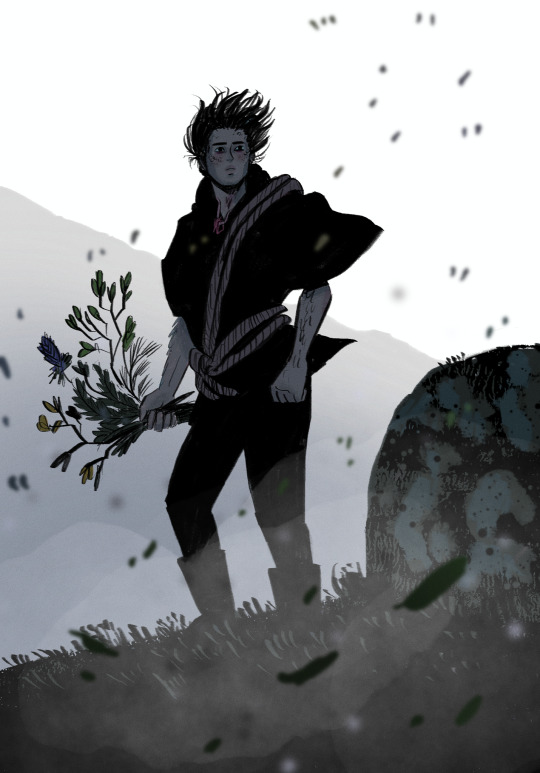
Black through the mountains
#drawing#illustration#digital art#comic#ill fame#webcomic#comics#art#procreate#mountains#moody#Byronic#the caption is a Patrick wolf lyric#the song bitten
4 notes
·
View notes
Text
Sometimes Being a "Dark Asset" is Problematical When Wanting Freedom from What Once Was
Michael Winnick's Dark Asset may well recall other #scifi cum #conspiracy type tv series or movies, but as for wondering who'll gain their freedom requires checking out this film! #moveireview @saban_films
Saban Films Playing at Select theatres and on VOD I can recognise shades of the cult movie Universal Soldier in Michael Winnick‘s Dark Asset, a science fiction cum conspiracy film about an ordinary soldier who gives up his life in order to be turned into a programmed killing machine. It’s almost like Star Wars Episode II: Attack of the Clones. But instead of making humanoid clones with biochip…

View On WordPress
0 notes
Text


1920 Photographer James Byron Clayton and friends took what might have been the very first group selfie! Taken at the Marceau Photo Studio on Fifth Avenue opposite St. Patrick's Cathedral. From Andra Roth Ruscin, FB.
740 notes
·
View notes
Text

current list of journalists who signed this letter:
Caspar Salmon
Sophie Monks Kaufman
Hannah Strong
Hanna Flint
Amon Warmann
Swara Salih
Clarisse Loughrey
Sarah Cook
Katie Smith-Wong
Christina Newland
Kelechi Ehenulo
Helen O’Hara
Leila Latif
Kambole Campbell
Josh Slater-Williams
Savina Petkova
Caitlin Quinlan
Shaheena U
Iana Murray
Ellen E Jones
Charles Bramesco
Juan Barquin
Jourdain Searles
Flavia Dima
Tariq Ra’ouf
Tim Robey
Ellis Lamai
Edward Hong
John Nugent
Patrick Sproull
Kayleigh Donaldson
Callie Petch
Justine Smith
Lillian Crawford
Douglas Greenwood
Kelli Weston
Glenn Kenny
Luke Hicks
Josh Spiegel
Scott Tobias
Matthew Morlai Kamara
Laura Venning
Hugo Emmerzael
Vikram Murthi
Wendy Ide
Brandon Streussnig
Jason Bailey
Jake Cole
Kimber Myers
Lauren Lola
Maryam Ahmad
Isaac Feldberg
Patrick Heidmann
Catherine Bray
Manuela Lazić
Tom Beasley
Charlie Shackleton
Rory O’Connor
Stephen A. Russell
Tom Huddleston
George Fenwick
Leslie Byron Pitt
Max Borg
Leonardo Goi
Jill Vranken
Scott Davis
Sarah Bradbury
Charlie Brigden
Matthew Turner
Linda Marric
Paul Devine
Kat Brown
Ryan Lambie
Freda Cooper
Jordan King
Sean Wilson
Mel Campbell
Jaime Rebanal
Jenna Mahale
Alistair Ryder
Jesse Hassenger
Mike McCahill
Sean Gilman
Jude Blay Yawson
Alex Milan Durie
Jon Lyus
Clint Worthington
Sean T. Collins
Brianna Zigler
Steph Green
Theo Rollason
Soraya Nadia McDonald
Steven Nguyen Scaife
Billie Walker
Jacob Stolworthy
Robert Daniels
Reuben Baron
Scott Renshaw
Jason Adams
Katie Kasperson
Oscar Goff
David Jenkins
Scott Dagostino
Rory Doherty
Jeremy Smith
Federica Battiato
Marya E. Gates
William Goodman
Debopriyaa Dutta
Devin Meenan
Quinn Bilodeau
Jennie Kermode
Sandy Schaefer
David Daut
Courtney Enlow
Sheila O’Malley
Steven Sloss
Andrew F. Pierce
Brian Tallerico
Katherine Rife
Jordan Maison
Anam Abbas
Andy Greene
Lindsey Romain
Fatima Sheriff
Erin Musset
Lex Briscuso
Joel Robinson
Angelica Jade Bastién
Carmen Paddock
Mark Asch
Johanna Griesé
BJ Colangelo
Billie Melissa
Rendy Jones
Vince Mancini
Jannat Suleman
Sabina Stent
Dana Stevens
Daniella Shreir
Ziyad Saadi
Travis Johnson
Cameron Ward
Saffron Maeve
Edward Frumkin
Tommaso Tocci
Lieven Trio
Ben Rosenstock
Yasmine Kandil
Dennis Tracy
Patrick Cremona
Mattie Lucas
Richard Fink
Danielle Ryan
Fiona Underhill
Jessica Scott
Heather Wilson
Keith Phipps
Jaime N. Christley
Ian Wang
Maria Lattila
David Daut
Hannah Wales
Rose Dymock
Nadira Begum
Amelia Emberwing
Erik Anderson
Matt Cipolla
Kyle Turner
David Willoughby
Pepe Ruiloba
Arjun Persaud
Ricardo Gallegos Ramos
Akash Saran
Rebecca Sayce
Clem Bastow
Briony Kidd
Sarah Manvel
85 notes
·
View notes
Text










我正在用二手衣服為女兒的電子閱讀器製作新封面;她會在愚人節這天離開台灣去愛爾蘭哈哈,其實她從小就很調皮,尤其是當我要生氣的時候。 I'm making a new cover of the daughter's e-reader with a second hand clothes. She will left Taiwan going to Ireland on April Fool's Day LOL, In fact, she has been very naughty since she was a child, especially when I am about to get angry.
Not done yet/ also being a birthday gift for my sweet daughter; her e-reader cover is old and broken, so I used a second hand clothes with it. will be done tomorrow I hope so. 🤓 she saw I made it for her with 愛爾蘭☘️三葉草seamróg,she gave me a happy smile, n I know she likes it because when she looked at it with her eyes shines bright as the little stars. Love u U xoxo ✨ 💫 Mom Lan~*
愛爾蘭詩人Thomas Moore (1779〜1852)的一首小詩 《Oh The Shamrock》。
他嘉許了三葉草(seamróg)內涵的品格,也讚美了它是愛、智慧、勇氣和靈動的化身,並且描述了三葉草外在的色澤,將它比作是晶瑩露珠下的祖母綠,青翠的嫩綠閃耀著無限的光輝。最後詩人著重在三葉草的地位~它是古老愛爾蘭的國花;時至今日三葉草仍是愛爾蘭以及北愛爾蘭的國花。
《哦,三葉草》
在愛爾蘭島的漫山遍野, 驕傲地生長, 是愛和勇氣 是智慧和靈動, 那耀眼的光芒 如萬箭鑽動。
遍地都盛開著 那三葉的草兒 掛著露珠,生機勃勃且 嬌嫩的祖母綠 像顆顆寶石 在最純淨的水晶下閃閃發光。
哦,三葉草,不朽的常綠! 永恆的眷顧之葉, 吟遊詩人的鍾愛, 古老愛爾蘭的三葉草!
在愛爾蘭的傳說中,生活在愛爾蘭的古代凱爾特人(Celt)視三葉草為聖物,因為它們長了三片葉子,而三這個數字,在凱爾特信仰中,是個極具神秘色彩的數字。(註:據目前歷史考證,凱爾特人是公元前2000年起生活在中歐的一些有著共同的文化和語言的有親緣關係的民族的統稱,曾廣泛擴散到歐洲各處,後來逐漸減少。如今,依然堅持繼承凱爾特語言文化的只剩下了愛爾蘭語、威爾士語、蘇格蘭蓋爾語和法國境內的布列塔尼語)。
此外最流行的一種解釋是,愛爾蘭和北愛爾蘭選三葉草做國花是因為,在公元5世紀時,愛爾蘭的主保聖人聖帕特里克St Patrick曾經在這裡藉助三葉草進行傳教,他將基督教聖子、聖父、聖靈三位一體的關係比作是三葉草的三片葉子,方便當地人的理解。然而,這種說法其實也只是傳說。愛爾蘭的文字記載直到17世紀才開始出現這個說法,而在17世紀以前,愛爾蘭和三葉草之間還有著曾經更為流行的故事。
📌 He was an English lawyer, judge, social philosopher, author, statesman, theologian, and noted Renaissance humanist. He also served Henry VIII as Lord High Chancellor of England from October 1529 to May 1532. He wrote Utopia, published in 1516, which describes the political system of an imaginary island state. Although Thomas Moore was an Irish Catholic and the son of a Dublin grocer, Moore became the fashionable versifier of Regency England. His Irish Melodies, published between 1807 and 1834 with accompanying music (some of the tunes by Moore himself), were an immense success, and for many years his wit, charm, liberalism, and singing voice made him a brilliant figure in literary and social circles, especially among the aristocratic Whig reformers. The same qualities made him one of Byron's closest friends. He wrote numerous satires, lampoons, and prose pieces. He is chiefly remembered, however, for the Oriental verse romance Lalla Rookh (1817), which achieve.



♡ღ 我留了3個包餡的橡果雞蛋糕給女兒下班來工作室,她吃完後就回家了,後天她要和大學同學一塊兒去香港和澳門玩。 I left three acorn egg cakes stuffed with fillings for my daughter to come to the studio after get off work. After she ate them, she went home. The day after tomorrow, she will go to Hong Kong and Macau with her college classmates on a light-trip. ღ♡
#chu lan#朱蘭皮藝#fine craft artist#leather art artist#beautiful life#daily life#made a birthday gift 🎁 for my daughter#my family my life my love#art is life#thomas moore#1779-1852 irish#seamróg#shamrock#irish shamrock#俄羅斯娃娃🪆#matryoshka doll#i love matryoshka doll#我愛俄羅斯娃娃🪆#матрёшка#russian doll
31 notes
·
View notes
Text
ENCONTRE UM AUTOR:
Envie sugestões. Leia uma citação no modo aleatório.
Autores Desconhecidos
Adélia Prado
Adrian Tchaikovsky
Affonso Romano de Sant’anna
Alain de Botton
Albert Einstein
Aldous Huxley
Alexander Pushkin
Amanda Gorman
Anaïs Nin
Andy Warhol
Andy Wootea
Anna Quindlen
Anne Frank
Antoine de Saint-Exupéry
Aristóteles
Arnaldo Jabor
Arthur Schopenhauer
Augusto Cury
Ben Howard
Benjamin Alire Sáenz
Benjamin Rush
Bill Keane
Bob Dylan
Brigitte Nicole
C. JoyBell C.
C.S. Lewis
Carl Jung
Carlos Drummond de Andrade
Carlos Fuentes
Carol Ann Duffy
Carol Rifka Brunt
Carolina Maria de Jesus
Caroline Kennedy
Cassandra Clare
Cecelia Ahern
Cecília Meireles
Cesare Pavese
Charles Baudelaire
Charles Chaplin
Charlotte Nsingi
Cheryl Strayed
Clarice Lispector
Claude Debussy
Coco Chanel
Connor Franta
Coolleen Hoover
Cora Coralina
Czesław Miłosz
Dale Carnegie
David Hume
Deborah Levy
Djuna Barnes
Dmitri Shostakovich
Douglas Coupland
Dream Hampton
E. E. Cummings
E. Grin
E. Lockhart
EA Bucchianeri
Edith Wharton
Ekta Somera
Elbert Hubbard
Elizabeth Acevedo
Elizabeth Strout
Emile Coue
Emily Brontë
Ernest Hemingway
Esther Hicks
Faraaz Kazi
Farah Gabdon
Fernando Pessoa
Fiódor Dostoiévski
Florbela Espanca
Franz Kafka
Frédéric Chopin
Fredrik Backman
Friedrich Nietzsche
Galileu Galilei
Georg Wilhelm Friedrich Hegel
George Orwell
Hafiz
Hanif Abdurraqib
Helen Oyeyemi
Henry Miller
Henry Rollins
Hilda Hilst
Iain Thomas
Immanuel Kant
Jacki Joyner-Kersee
James Baldwin
James Patterson
Jane Austen
Jean Jacques Rousseau
Jean Rhys
Jean-Paul Sartre
Jeremy Hammond
JK Rowling
João Guimarães Rosa
Joe Brock
Johannes Brahms
John Banville
John C. Maxwell
John Green
John Wooden
Jojo Moyes
Jorge Amado
José Leite Lopes
Joy Harjo
Juan Ramón Jiménez
Juansen Dizon
Katrina Mayer
Kurt Cobain
L.J. Smith
L.M. Montgomery
Leo Tolstoy
Lisa Kleypas
Lord Byron
Lord Huron
Louise Glück
Lucille Clifton
Ludwig van Beethoven
Lya Luft
Machado de Assis
Maggi Myers
Mahmoud Darwish
Manila Luzon
Manuel Bandeira
Marcel Proust
Margaret Mead
Marina Abramović
Mario Quintana
Mark Yakich
Marla de Queiroz
Martha Medeiros
Martin Luther King
Mary Oliver
Mattia
Maya Angelou
Mehdi Akhavan-Sales
Melissa Cox
Michaela Chung
Miguel de Cervantes Saavedra
Mitch Albom
N.K. Jemisin
Neal Shusterman
Neil Gaiman
Nicholas Sparks
Nietzsche
Nikita Gill
Nora Roberts
Ocean Vuong
Osho
Pablo Neruda
Patrick Rothfuss
Patti Smith
Paulo Coelho
Paulo Leminski
Perina
Peter Ilyich Tchaikovsky
Phil Good
Pierre Ronsard
Platão
Poe
R.M. Drake
Raamai
Rabindranath Tagore
Rachel de Queiroz
Ralph Emerson
Raymond Chandler
René Descartes
Reyna Biddy
Richard Kadrey
Richard Wagner
Ritu Ghatourey
Roald Dahl
Robert Schumann
Roy T. Bennett
Rumi
Ruth Rendell
Sage Francis
Séneca
Sérgio Vaz
Shirley Jackson
Sigmund Freud
Simone de Beauvoir
Spike Jonze
Stars Go Dim
Steve Jobs
Stephen Chbosky
Stevie Nicks
Sumaiya
Susan Gale
Sydney J. Harris
Sylvester McNutt
Sylvia Plath
Sysanna Kaysen
Ted Chiang
Thomas Keneally
Thomas Mann
Truman Capote
Tyler Knott Gregson
Veronica Roth
Victor Hugo
Vincent van Gogh
Virgílio Ferreira
Virginia Woolf
Vladimir Nabokov
Voltaire
Wale Ayinla
Warsan Shire
William C. Hannan
William Shakespeare
Wolfgang Amadeus Mozart
Yasmin Mogahed
Yoke Lore
Yoko Ogawa
324 notes
·
View notes
Text
Nikola Orsinov (TMA) ID Pack
[PT: Nikola Orsinov (TMA) ID Pack].

[ID: A purple thin line divider shaded at the bottom. End ID].
Names
[PT: Names].
Anemone, Annette, Bastien, Belladonna, Byron, Calliope, Cameo, Cassius, Charlie, Chelle, Chloe, Delilah, Edgar, Esmeralda, Galadriel, Harriet, Hysteria, Jitter, Jolly, Lazarus, Lilith, Lucile, Luxe, Marie, Marigold, Morgana, Mystique, Nadia, Nia, Nysa, Patrick, Paula, Penelope, Penny, Pixie, Posey, Regina, Roxanne, Serenade, Silhouette, Tabitha, Tango, Thaddeus, Thalia, Vex, Wanda
Pronouns
[PT: Pronouns].
Car / Carn / Carnis [Carnival], Chi / Chime / Chimes, Do / Doll / Dolls, Jest / Jester / Jests, Lau / Laugh / Laughs, Mask / Masks / Masks, Mir / Mirth / Mirths, Mock / Mocks / Mocks, Mu / Muse / Muses, Puppet / Puppets / Puppets, Ri / Rin / Ring [Ring/Ringmaster], Smi / Smil / Smiles, Spec / Tac / Specs [ Spectacle], Sta / Stage / Stages, Stra / Strange / Stranger, Whim / Whim / Whimsy, Win / Wink / Winks
Titles
[PT: Titles].
[Pronoun] Who Laughs in the Dark, [Pronoun] Who Plays with Perception, [Pronoun] Who Wears Many Faces, A Dollmaker's Delight, The Carnival's Ringmaster, The Conductor of Chaos, The Cruel Doll, The Doll in the Spotlight, The Eerie Elegance, The Face Behind the Mask, The Heart of the Circus, The Horror Harlequin, The Identity Thief, The Masked Performer, The Odd and Absurd One, The Stranger's Harbinger, The Uncanny Jester

[ID: A purple thin line divider shaded at the bottom, End ID].
Requested by @rabbitstwitchchat
Also tagging: @id-pack-archive
#nikola orsinov#tma#the magnus archives#tma nikola#id pack#npts#npt pack#npt#npt list#names pronouns titles#name suggestions#pronoun suggestions#title suggestions#neopronouns#neopronoun suggestions
12 notes
·
View notes